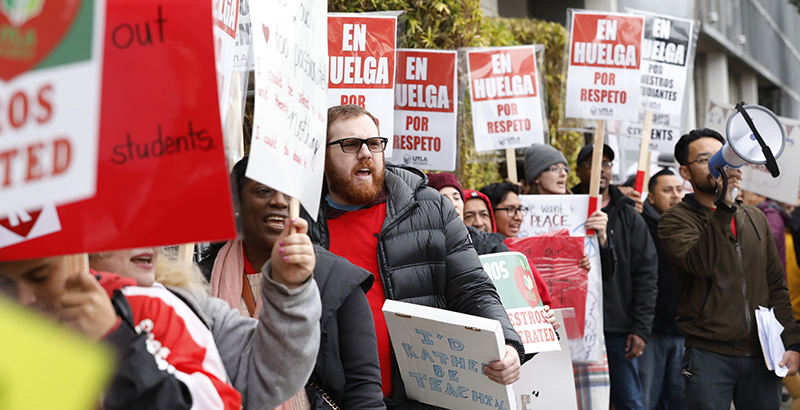Barrett: Charter Schools Must Not Be a Scapegoat for Traditional Districts’ Financial Distress

A common refrain from charter school opponents is that charter schools “steal” students from zoned public schools, draining resources and making it difficult to educate the students who remain. This argument has been a rallying cry for moratoriums and a scapegoat for why school districts are failing and/or under financial duress.
While intuitively appealing, causally linking enrollment changes to these outcomes makes several dubious assumptions. The Center on Reinventing Public Education (CRPE) addresses some of these in several reports that analyze financial and performance data from California, a state at the forefront of the push to eliminate charter schools through recent legislative efforts. The CRPE reports reveal that, although popular, these assumptions fail to stand up to deeper scrutiny and raise significant doubt that charter schools are the cause of performance and financial difficulties in traditional districts.
At the heart of these claims is the assumption that declining enrollment in traditional districts is caused solely by the presence of charter schools. While the CRPE report evaluating this relationship finds some correlation, it suggests that the growth in charter school enrollment can, at most, account for 55 percent of district enrollment loss. In Los Angeles, enrollment declines in the district are not explained at all by charter school enrollment in 2017-18 and 2018-19, as both traditional public schools and charter schools experienced decreases during this time.
These findings highlight the important fact that direct comparisons between district and charter schools ignore larger demographic patterns, such as population trends and students who opt out of public schooling altogether. The authors also note that declining enrollments occur in many districts that have very few or no charter schools and that private school enrollment also declined over the study period. Growth in the charter sector can also come from students transferring out of the private sector rather than solely from traditional public schools.
There are certainly districts that are more challenged by funding losses associated with declining enrollments. However, the assumption that enrollment declines alone are a necessary and sufficient condition for financial distress is problematic.
Here again, a report by CRPE provides several important insights into these relationships. One, very few districts in California experience fiscal distress. Two, charter schools account for less than 5 percent of enrollment in districts with a qualified or negative fiscal distress rating, meaning they may not or cannot meet their financial obligations over the next two years. Finally, over time, no relationship is evident between the growth of the charter school sector and the frequency of districts experiencing fiscal distress. To be sure, the presence of charter schools has financial implications, but much less so than other factors associated with school districts’ financial situations, such as pension obligations, proper budgeting practices and sound estimated enrollment projections.
It is also unlikely that an increase in resources will automatically translate into better outcomes for students. That’s not to say that money isn’t important — it certainly is — but a multitude of factors can affect this relationship. Increasing funding at the district level by limiting charter schools does not guarantee the allocation of those resources to the schools that serve the students who otherwise would have attended a charter school. Besides, with less funding than urban traditional schools, urban charter schools in California, on average, deliver better academic results for their students than urban traditional schools. Furthermore, another CRPE report highlights the importance of considering other factors, such as the parental right to choose, capital expenses and the overall cost to society when systems are prohibited from providing high-quality school options to children.
A careful consideration of these factors taken together suggests that the claims levied by anti-charter school advocates and their offered policy solutions, such as moratorium calls and the enactment of a sole district authorizer, are myopic and unlikely to create better opportunities for historically underserved students.
Perhaps most frustrating is that other policy options are available to help traditional districts serve their students well without limiting families’ right to choose what is best for their children. Several states have introduced hold-harmless policies, which provide additional funding to temporarily supplement district revenue for students who have transferred to a charter school. Research has shown that the presence of charter schools can have a positive effect on the outcomes of the local students that remain in traditional schools.
At the end of the day, anti-charter school arguments assume that traditional districts are already doing everything possible to improve student outcomes and that only external pressures are the issue. With all the scrutiny that the charter sector faces, when will we start making the assumption that traditional districts are not perfect? There are certainly things they can do to get their own house in order before we tear down a system that has provided opportunities to families who desperately want them.
Nathan Barrett, Ph.D., is senior director of research and evaluation at the National Alliance for Public Charter Schools.
Get stories like these delivered straight to your inbox. Sign up for The 74 Newsletter

;)